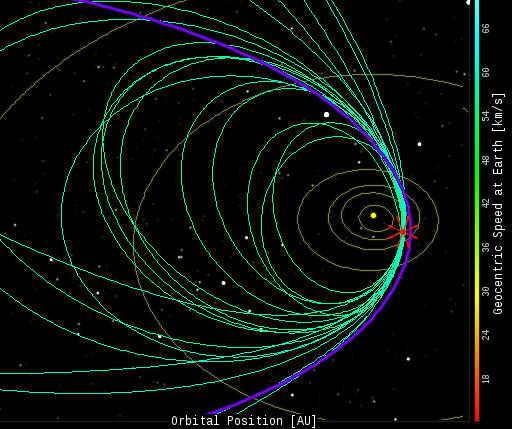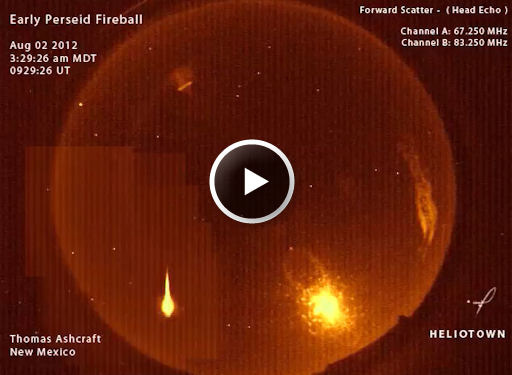1 August 2012 : Earth has entered a broad stream of debris from Comet Swift-Tuttle, source of the annual Perseid meteor shower. Meteoroids in the outskirts of the stream are now hitting Earth's atmosphere, producing as many as 10-15 meteors per hour according to worldwide counts from the International Meteor Organization. NASA's network of all-sky meteor cameras captured 17 Perseid fireballs on the nights of July 28th through 30th. Here are their orbits:
In the days ahead, Earth will plunge deeper into the meteoroid stream, and meteor rates will increase accordingly. Forecasters expect the shower to peak on August 12-13 with as many as 100+ meteors per hour visible from dark-sky sites. Monitor the realtime meteor gallery for sightings.
At the moment, Perseid meteor rates are low--no more than about 10 per hour. In the days ahead, however, Earth will plunge deeper into the comet's debris stream, and meteor activity will increase accordingly. Forecasters expect the shower to peak on August 12-13 with as many as 100+ meteors per hour visible from dark-sky sites. Stay tuned for Perseids.
www.spaceweather.com


 RSS Feed
RSS Feed